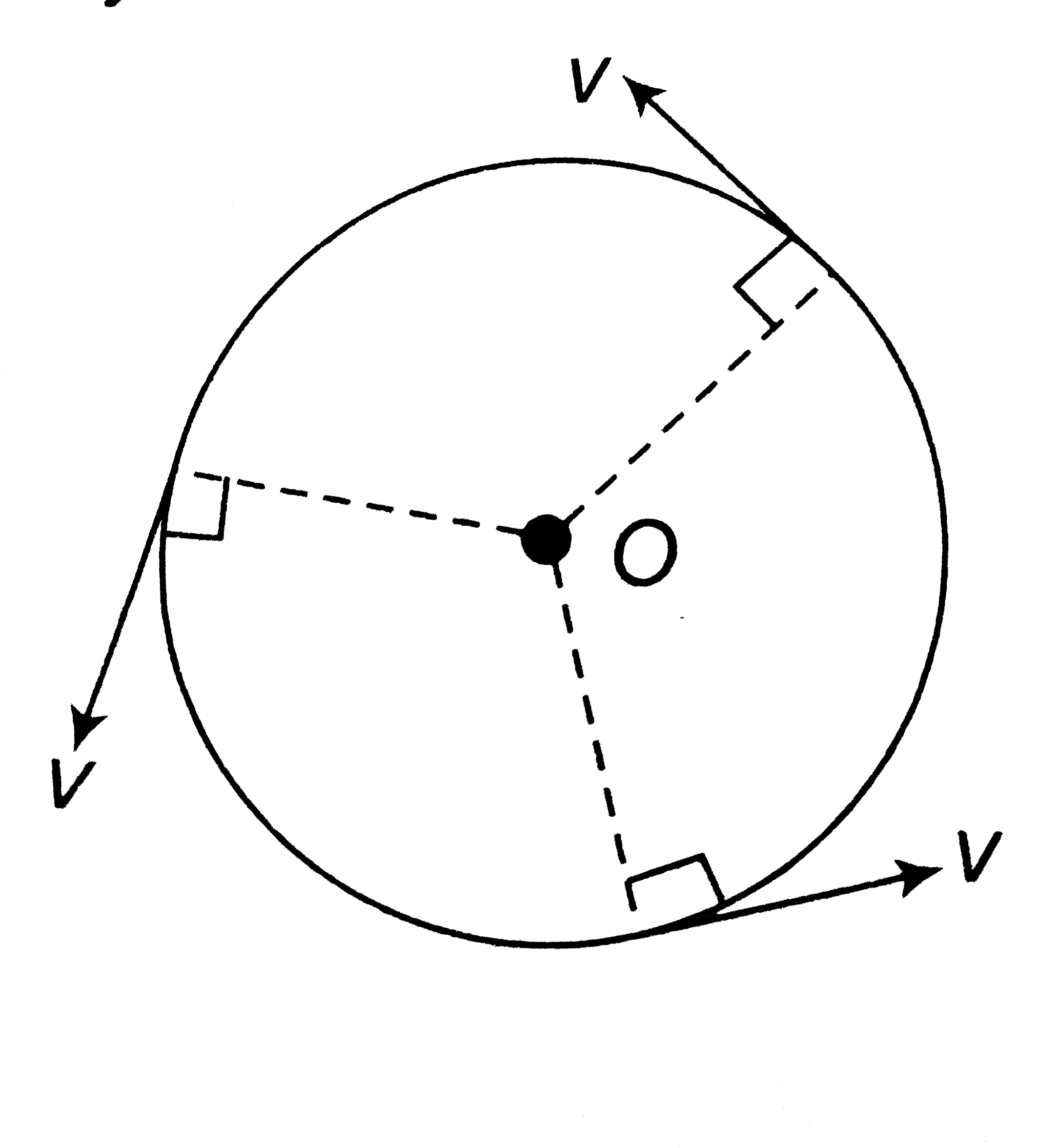In an orbital motion, the angular momentum vector is :
A
perpendicular to the orbital plane
B
along the radius vector
C
parallel to the linear momentum
D
in the orbital plane
Video Solution
Text Solution
The correct Answer is:A
(a) If a body is rotating about an axis, then the sum of the moments of the linear moment of all the particles about the given axis is called the angular momentum of the body about that axis.
J=Iω=mrv
Since direction of velocity is perpendicular to orbital plane and J∝v, therefore in an orbital motion the angular momentum vector is perpendicular to thje orbital plane.
 .
.
|
Topper's Solved these Questions
- ROTATIONAL DYNAMICSBOOK - A2ZCHAPTER - ROTATIONAL DYNAMICSEXERCISE - Chapter Test
29 Videos
- ROTATIONAL DYNAMICSBOOK - A2ZCHAPTER - ROTATIONAL DYNAMICSEXERCISE - NEET Questions
59 Videos
- PROPERTIES OF MATTERBOOK - A2ZCHAPTER - PROPERTIES OF MATTEREXERCISE - Chapter Test
29 Videos
- THERMAL PROPERTIES OF MATTERBOOK - A2ZCHAPTER - THERMAL PROPERTIES OF MATTEREXERCISE - Chapter Test
30 Videos
Similar Questions
Knowledge Check
Angular momentum is vector product of
Aradius vector and linear momentumBlinear momentum and angular velocityCmomentum of inertia and angular accelerationDlinear velocity and radius vectorIn planetary motion, the angular Momentum conservation leads to the law of
AorbitsBareasCperiodsDconservation of kinetic energyThe orbital angular momentum of 3p electron is :-
A√3hB√6hCzeroD√2h2π
The orbital angular momentum of a p- electron is
View Solutionthe orbital angular momentum of 4f electron is
View SolutionThe magnitude of an orbital angular momentum vector of an electron is √6h2π into how many components will the vector split if an external field is applied to it ?
View SolutionThe orbital with zero orbital angular momentum is.
View SolutionThe orbital with zero orbital angular momentum is :
View Solution
